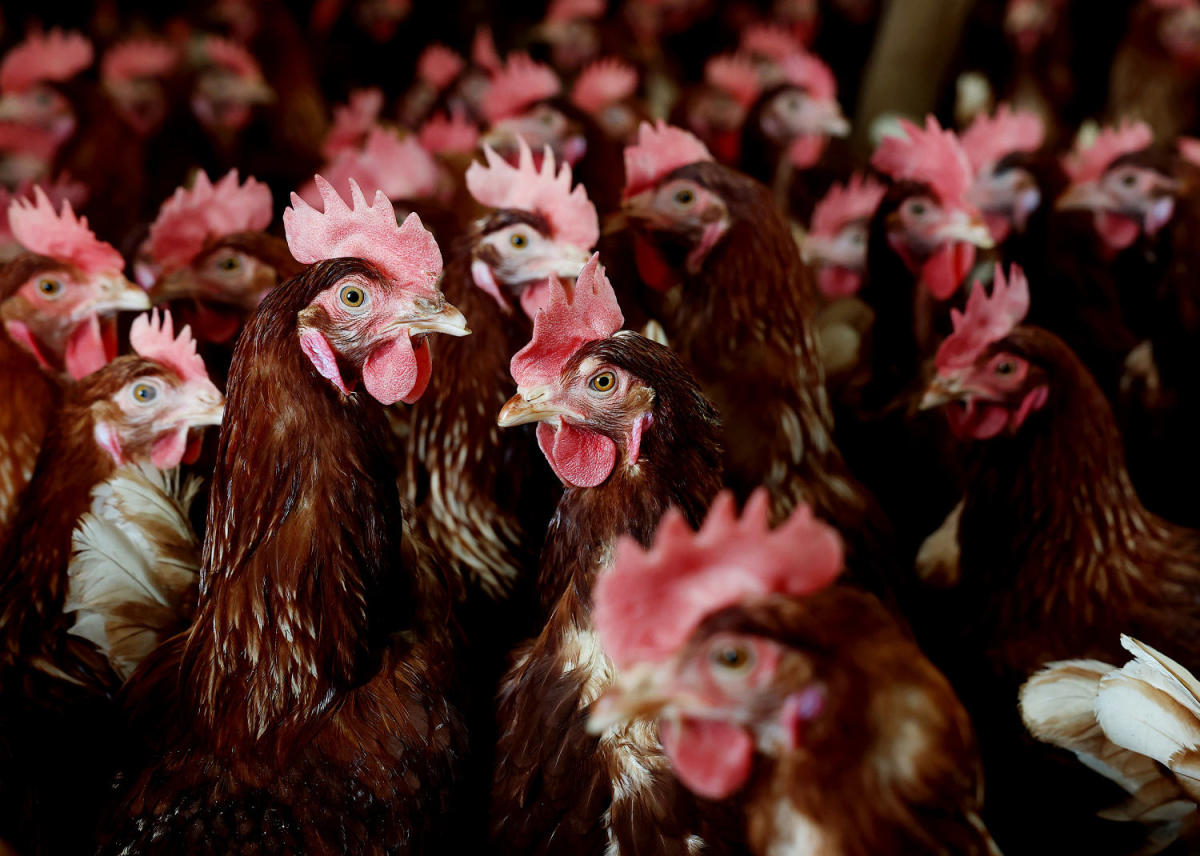
The United States has so far avoided vaccination as a strategy to eradicating bird flu in poultry, instead relying on culling infected flocks. With the escalating outbreak driving up egg prices to record highs, could that approach soon change?
And as millions of flocks continue to die, why aren’t vaccines being given already?
The Agriculture Department on Friday gave its strongest sign yet that the federal government could be shifting its strategy. The agency said it granted a conditional license for an H5N2 bird flu vaccine designed to work against variants of the H5N1 virus, the strain circulating among herds of dairy cows and domestic poultry in the U.S. H5N2 belongs to a family of bird flu viruses which includes H5N1.
Advertisement
Advertisement
The license to Zoetis, a New Jersey-based vaccine manufacturer, is an acknowledgment that the vaccine has met the USDA’s requirements for safety and “reasonable expectation” of effectiveness, a company spokesperson said.
However, the USDA has stopped short of allowing doses to be widely distributed. An agency spokesperson said in an emailed statement that the conditional license doesn’t mean that it has approved the vaccine for commercial use or that poultry farmers can purchase it at this time.
“This is simply a normal step in the research and development phase, not in the implementation of a vaccine strategy,” the USDA spokesperson said.
Still, experts say, the move suggests that federal health officials may be considering other tools, such as a vaccine, to address the ongoing crisis. In December, the government expanded testing of the nation’s milk supply.
Advertisement
Advertisement
As of Tuesday, more than 160 million chicken, turkey, goose and other infected birds have been euthanized, according to the Centers for Disease Control and Prevention. There have been outbreaks in at least 972 dairy herds across 16 states, although culling livestock isn’t a typical practice as they can recover from the disease.
Agriculture Secretary Brooke Rollins is expected “in the coming days” to announce a new strategy to fight the virus, a USDA spokesperson said, without commenting on whether vaccines would play a role.
If the federal government were to vaccinate poultry, it could come with a number of complications, notably that many U.S. trading partners won’t accept exports from countries that allow vaccinations, said Carol Cardona, an expert on avian health at the University of Minnesota.
“When we talk about poultry, we’re talking about ducks and turkeys and chickens, and that’s the chickens we eat and the egg laying chickens, and they’re all grouped together in terms of trade restrictions,” she said.
Advertisement
Advertisement
More in Health
The broiler industry — the agriculture sector responsible for raising chicken specifically for meat consumption — would likely be the most impacted, Cardona said. It represents about 96% of the poultry industry, she said, and has huge export markets. The broiler industry provides $449.5 billion in economic activity and $36.7 billion in government revenue, according to a report from the U.S. Poultry & Egg Association, an industry trade group.
“The broiler industry, in their own interest, would say, ‘No, no vaccine until there are no egg layers left,” Cardona said. “It’s an extreme position, but they could.”
What’s more, the federal government and manufacturers will still need to make enough vaccines to immunize poultry farms across the U.S. The government, Cardona said, got burned in 2015 when it authorized a bird flu vaccine to be placed in the nation’s stockpile, but was never used. In January, the USDA said it would begin to rebuild its stockpile of bird flu vaccines for poultry.
“So if the announcement comes, we’re ready to vaccinate, people have to put in orders,” she said.
Advertisement
Advertisement
Daniel Perez, a poultry medicine expert at the University of Georgia College of Veterinary Medicine who studies how influenza viruses jump from animals to humans, said he’s concerned that vaccinating poultry could facilitate silent spread, where transmission occurs in asymptomatic birds.
“Vaccines can sometimes be seen as kind of a double-edged sword,” Perez said. “They can control the disease, but at the same time, they may not be able to control infections. So vaccinated animals may show no signs of the disease.”
As is seen with vaccinated humans, not every vaccinated bird will be protected or have the same level of protection as the next, he said.
“If a high path virus enters into a facility of vaccinated chickens, there could be these low levels of viral replication that eventually promote the emergence of strains with mutations,” Perez said, “and the effect of those mutations could be a virus with increased host range, a virus that can infect other species,” including humans.
Advertisement
Advertisement
Cardona said it’s “theoretical” but it’s possible there could be vaccinated birds with “silent infections.”
However, she noted that the country has a lot more resources to manage a scenario like that than it previously had.
“We have a lot more labs and a lot more testing capacity than we had back when those were theorized to be problems,” Cardona said.
Another consideration is that people who vaccinate the birds — likely farmworkers — will likely need adequate protection to make sure they’re not infected by the virus, said Dr. William Schaffner, an infectious diseases expert at Vanderbilt University Medical Center in Nashville, Tennessee.
Advertisement
Advertisement
Public health experts, he said, have been concerned about the potential health risks of poultry and dairy workers who work in close proximity to animals and often in dirty environments.
Perez said there’s currently ongoing research to provide mass vaccination of poultry via drinking water, reducing human exposure.
Another idea is vaccinating the farmworkers against the virus as well, Schaffner said.
“Hazmat suits and face shields and gloves — things which work pretty well in the hospital when you’re taking care of a patient — don’t work so well when you’re out on the farm,” he said.
Perez noted that influenza vaccines for poultry and humans aren’t highly effective, and typically use an older technology that takes months to produce doses.
“I would say we should use this crisis as an incentive to do more research on improving vaccines,” he said.
This article was originally published on NBCNews.com
EMEA Tribune is not involved in this news article, it is taken from our partners and or from the News Agencies. Copyright and Credit go to the News Agencies, email news@emeatribune.com Follow our WhatsApp verified Channel





